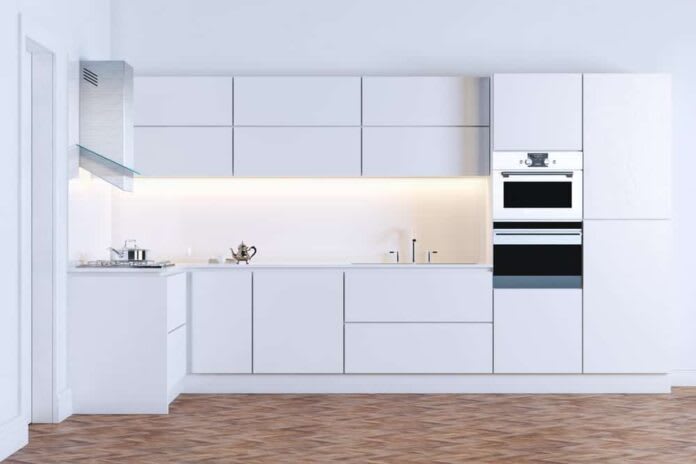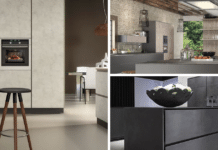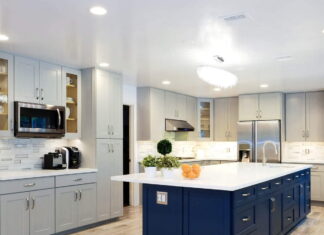We see minimalist kitchens all the time on social media. These kitchens have clean countertops and no clutter in sight. Most kitchens will have cooking utensils, food, and cooking ware everywhere in the room.
So how can one keep their kitchen so empty? Is this even possible or viable?
What is a Minimalist Kitchen
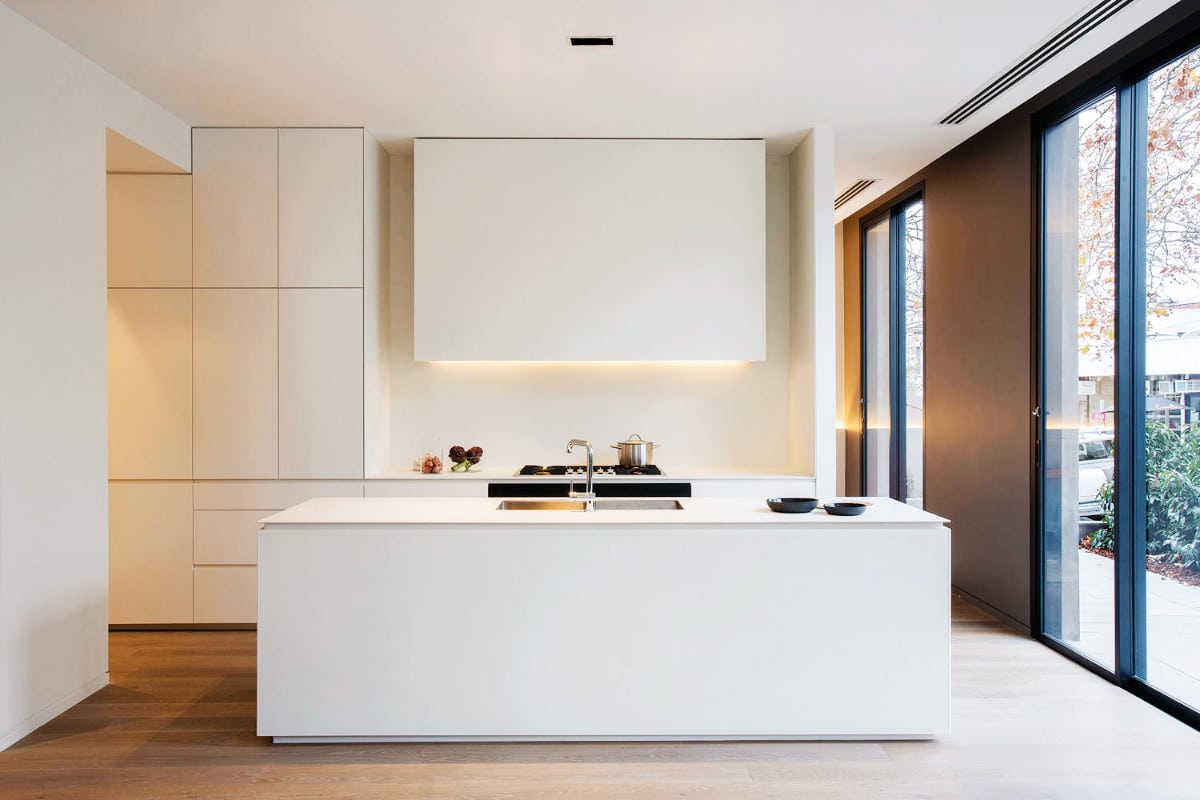
A minimalist kitchen has very little on display. Typically, this is done and shown with smaller kitchens to emphasize the workspace. Too much clutter makes these smaller workspaces harder to navigate and even makes the area feel more cramped.
To make the small area visually large, using minimalism to add visually simplistic cabinets creates fewer distractions. Although shaker cabinets are only a simple design, visually, the human eye focuses on the details.
Additional accessories for traditional cabinets have been added, which makes American cabinets typically busier than modern styles.
Why Would Someone Want a Minimalist Kitchen
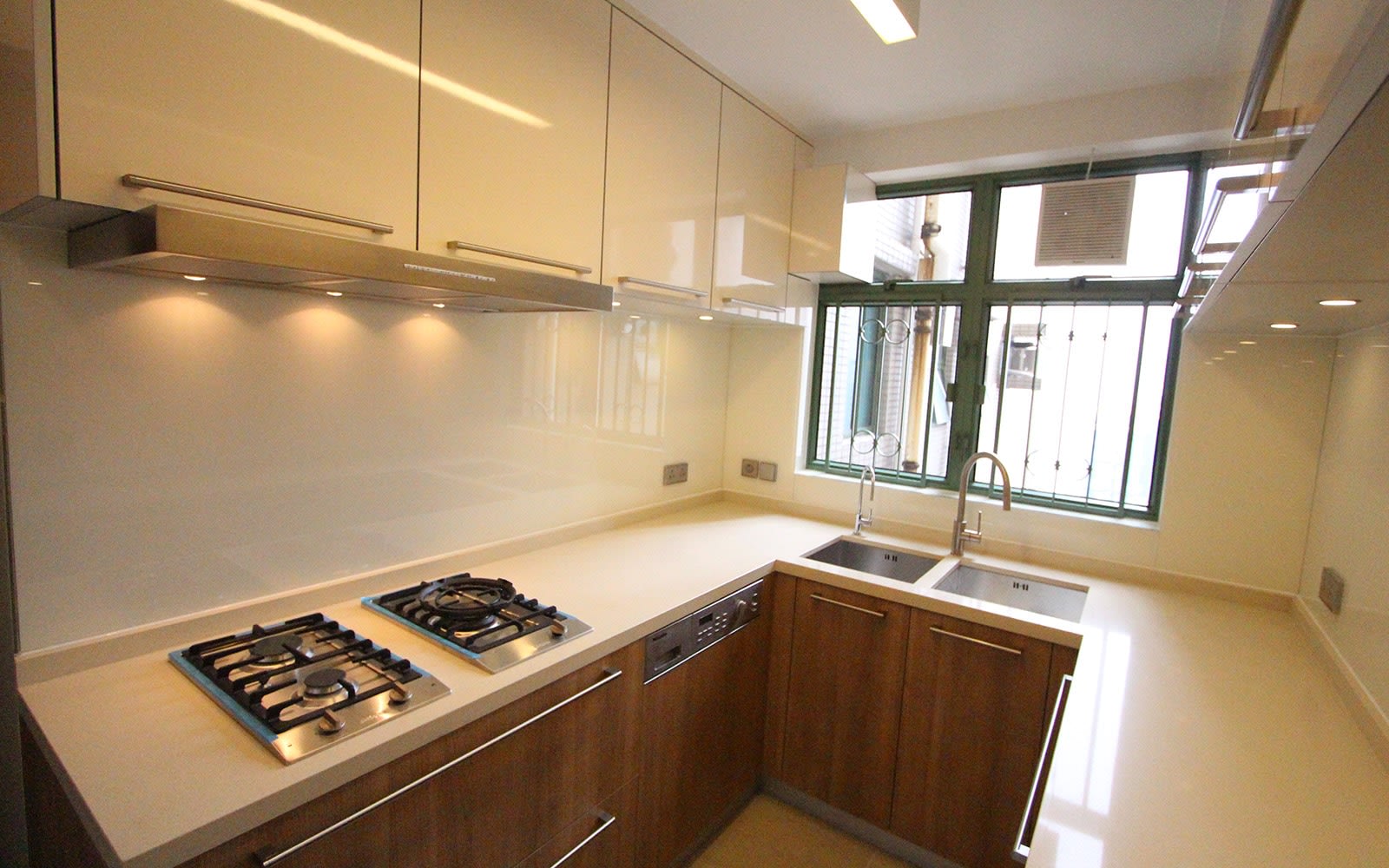
A minimalist kitchen allows for a simple, clean canvas. In a time when less is better, minimalism is at an all-time high.
Websites, design, and even trends all embrace the idea that simplicity is king. Having too much makes kitchen access, navigation, and workflow much more complicated than they should be.
It goes beyond the concept that one needs to clean up one’s kitchen. Then, that person may question the difference between a minimalist and a cleaned-up kitchen.
A minimalist kitchen creates a large feeling of space from a small area. Less visual is the key here. It may not be the same as putting the coffee maker and toaster away every other time after use.
How Can One Achieve Minimalism
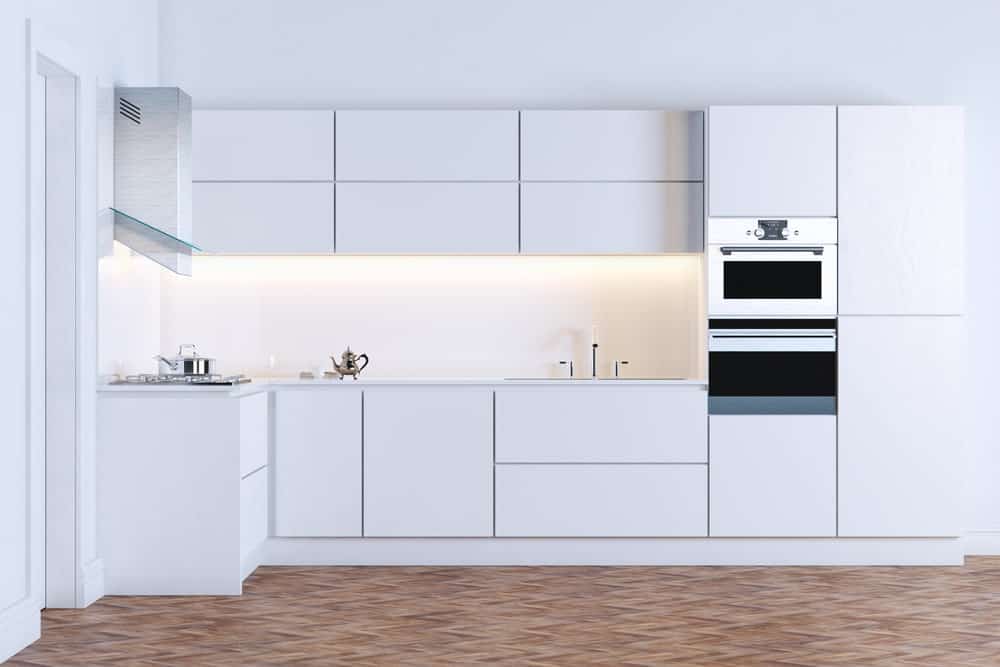
Keeping less clutter and a less busy kitchen is key to a minimalist-looking workplace. Normally, these options are considered when remodeling the kitchen.
Even with a fully built kitchen, adding ease-of-access storage can help one convert all countertop appliances to be easily hidden away.
When redesigning the kitchen, people choosing minimalism will go for modern European kitchen cabinets. The cabinet surfaces have the least visual separation from door to door.
Thus, the cabinets allow for a more open aesthetic to the room compared to shaker cabinets. Traditional cabinets will typically have the shaker design and crown molding. These features don’t physically affect the cabinet’s storage but visually make the kitchen more busy.
In many cases, stainless steel appliances are not seen. These are condensed into an electric cooktop and wall oven. Homeowners also incorporate these appliances into their cabinets to have even fewer countertop appliances.
These may include a microwave drawer and a built-in espresso machine. Some may go even further and find other appliances fully incorporated. The refrigerator and dishwasher have panel-ready options.
This means the traditional stainless steel appliances can blend in with the rest of the kitchen.
Should One Get a Minimalist Kitchen
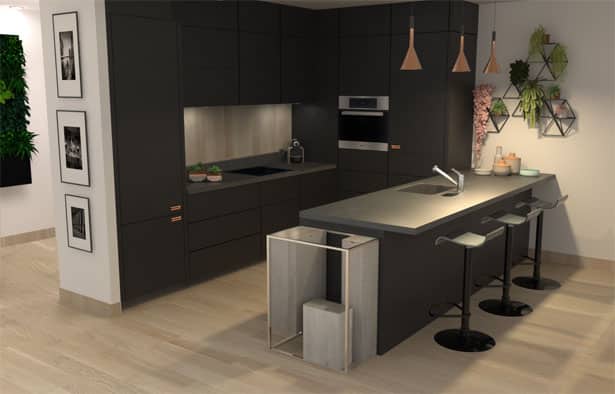
People shouldn’t just transform or remodel their kitchens based on current trends. The trendy kitchen option may disappear as trends come and go in the upcoming year. A benefit of minimalist kitchens is that they are simplistic modern kitchens.
Less out means less cleaning, and less on the countertops means cleaning is also a breeze. All you need to do is an easy wipe-down. There is no need to move stuff around while cleaning.
A minimalist kitchen will enable storage and organization. European cabinets are minimally designed by nature. Some base cabinets do not offer drawers, so homeowners will look to roll out drawers hidden inside the cabinets.
These are helpful for accessing hard-to-reach cabinets and one of the best for storing away larger countertop appliances in the back without worry. This means one does not always have to have the coffee maker out and present all the time.

